Q
What camper shells fit Toyota Tundra?
The Toyota Tundra can fit a variety of camper shells, depending primarily on the bed length (available in 5.5-foot or 6.5-foot versions). Renowned brands like Leer, ARE, and SnugTop offer fiberglass or aluminum shells specifically designed for the Tundra, perfectly matching the bed's width of about 1.65 meters, with installation typically requiring no additional modifications.
These camper shells often come equipped with practical features such as sliding windows, mosquito screens, and roof racks, making them especially suitable for Malaysia's hot and rainy climate. For those seeking a lightweight solution, the foldable soft tops from American brand Softopper are also a popular choice, allowing for quick installation and removal while still accommodating cargo needs.
When selecting a camper shell, it's essential to consider the length differences between the Double Cab and CrewMax models (approximately 1.67 meters or about 1.98 meters) and to ensure that the shell includes provisions for rear window access. Local modification shops, such as ARB authorized dealers in Kuala Lumpur, can typically assist with installation and may also add waterproof seals and interior storage systems to enhance practicality. For frequent off-road camping, it's recommended to choose a model with reinforced supports to handle bumpy terrains.
Special Disclaimer: This content is published by users and does not represent the views or position of PCauto.
Related Q&A
Q
How many litres is a Toyota Tundra fuel tank?
The fuel tank capacity of the Toyota Tundra varies depending on different years and configurations. The latest models usually come with a large-capacity fuel tank of about 32.2 gallons (approximately 122 liters), which is suitable for long-distance driving or heavy load requirements. This design is quite common among pickup truck models, as it can reduce the frequency of refueling and enhance practicality. For users in Malaysia, although the Tundra is not a mainstream local model, its fuel tank capacity matches its powerful V6 or V8 engine, ensuring sufficient driving range, especially suitable for scenarios that require frequent long-distance driving or off - roading.
It should be noted that the fuel tank capacity may vary slightly depending on specific models (such as SR5, Limited, or TRD Pro versions) or market configurations. It is recommended to check the official specifications or consult the dealer before purchasing a vehicle to obtain accurate information. In addition, while a large fuel tank is convenient, it also increases the overall vehicle weight, which may slightly affect the fuel consumption performance. Therefore, in daily use, one needs to balance the actual needs with fuel economy.
Q
How long will a Toyota Tundra Hybrid battery last?
The hybrid battery life of the Toyota Tundra Hybrid typically ranges from 10 to 15 years, depending on usage conditions and maintenance. The tropical climate in Malaysia may have a certain impact on the battery life. However, Toyota's hybrid battery design has taken into account the adaptability to high-temperature environments. So, as long as regular maintenance is carried out, the battery performance can be maintained for a long time.
To extend the battery life, it is recommended to avoid exposing the vehicle to extreme high temperatures for a long time, regularly check the battery cooling system, and keep the battery in an appropriate charging state. The cost of replacing the hybrid battery is relatively high, but Toyota offers a battery warranty for up to 8 years or 100,000 miles (about 160,000 kilometers), which provides additional protection for car owners.
In addition, the advantages of hybrid technology lie in its fuel economy and environmental performance. For Malaysian car owners, this can not only save fuel costs but also reduce carbon emissions, which is in line with the global environmental protection trend. If you have more questions about hybrid technology, you can consult your local Toyota dealer, and they can provide more detailed maintenance advice and technical support.
Q
How many litres per 100km does a Toyota Tundra Hybrid use?
As a full-sized hybrid pickup truck, the fuel consumption of the Toyota Tundra Hybrid varies depending on specific driving conditions and configurations. The official data shows that its combined fuel consumption is approximately between 9.8 and 10.7 liters per 100 kilometers, which is a significant improvement compared to the traditional fuel-powered Tundra (about 13-15 liters per 100 kilometers). This is thanks to its hybrid system consisting of a 3.5-liter V6 twin-turbocharged engine and an electric motor, which can provide strong power while also taking fuel economy into account.
For Malaysian users, although the Tundra Hybrid has not been officially launched in the local market, the fuel consumption performance and hybrid technology of this vehicle are worth paying attention to. Especially considering the fluctuating oil prices and the increasing environmental awareness in Malaysia, hybrid vehicles may become a practical choice in the future.
It should be noted that the actual fuel consumption is affected by the load, road conditions, and driving habits. For example, frequent acceleration or high-speed driving may result in a fuel consumption close to 12 liters per 100 kilometers, while smooth driving or urban commuting may lead to a consumption of less than 10 liters per 100 kilometers. If Malaysian consumers are interested in hybrid pickups, they can also refer to the fuel consumption data of similar models such as the Ford F-150 Hybrid (about 9-11 liters per 100 kilometers) for a horizontal comparison.
Q
Is the Toyota Tundra a hybrid or non hybrid?
The Toyota Tundra currently offers both Hybrid and Non - Hybrid versions, depending on the model year and configuration. For example, the third - generation Tundra launched in 2022 first introduced the i - FORCE MAX hybrid system. It combines a 3.5 - liter V6 twin - turbocharged engine with an electric motor, capable of outputting 437 horsepower and 790 N·m of torque, significantly improving fuel economy and power performance. In contrast, the non - hybrid version still uses a traditional fuel engine.
For Malaysian consumers, hybrid models can balance performance and energy - saving during long - distance driving or when there are heavy - load requirements. However, it's necessary to check whether the relevant versions are introduced in the local market, as the vehicle configurations in Southeast Asian regions may be adjusted according to market demand. Hybrid technology has become a global trend for pickups. Competitors like the Ford F - 150 Lightning have also launched electrified options. It is recommended to consult local dealers to confirm the latest specifications before purchasing a car. At the same time, you can compare the differences in hybrid technologies among different brands. For instance, Toyota's THS system is well - known for its maturity and reliability, making it suitable for users who value durability.
Q
What caused the Toyota Tundra engine failure?
Engine failures in the Toyota Tundra can be caused by a variety of factors, including improper maintenance, oil - related issues, or cooling system malfunctions. For example, failing to change the oil for an extended period may result in insufficient lubrication, which can lead to internal engine wear. In Malaysia's hot and humid climate, inadequate maintenance of the cooling system can also cause the engine to overheat. Additionally, fuel quality and sensor malfunctions can affect the engine's performance.
For large - displacement vehicles like the Tundra, regular maintenance is particularly crucial. It is recommended that owners follow the manufacturer's maintenance manual, use the appropriate grade of oil and fuel, and regularly check components such as coolant and belts. Malaysian owners also need to be aware of the impact of the high - temperature and rainy environment on the engine. For instance, moisture can cause electrical circuit problems, and during high - load driving (such as towing heavy objects), it is essential to ensure that the cooling system is working properly. If you notice abnormal engine noises, a decrease in power, or warning lights on the dashboard, you should have the vehicle inspected and repaired promptly to prevent further damage.
Q
Is the Toyota Tundra a reliable car?
As a full-sized pickup truck targeting the North American market, the Toyota Tundra has a good reputation for reliability. Its body-on-frame structure and well-established V6/V8 powertrain have been long-term market-tested, showing stable performance in terms of durability. It's especially suitable for some users in Malaysia who need to deal with rough terrains or heavy-load requirements.
The Tundra is equipped with a high-strength steel chassis and an optimized suspension system, which can well adapt to the diverse road conditions in Malaysia. However, it should be noted that due to its large body size, it may take some time to get used to driving it on the narrow urban roads in Malaysia.
The maintenance of the Tundra is relatively convenient under Toyota's global service system. But as an imported model, the parts supply cycle and cost may be slightly higher than those of locally assembled models.
For Malaysian consumers considering buying a full-sized pickup truck, apart from reliability, they should also take into account the actual usage scenarios. For example, whether they need to frequently enter and exit underground parking lots or narrow streets, as well as the local tax policies for large vehicles. These factors will all affect the actual usage experience.
Q
Who Produces Toyota Tundra Engines?
The engines of the Toyota Tundra are mainly designed and manufactured by Toyota Motor Corporation itself. Its production base is located at the Huntsville plant in Alabama, USA. This plant specializes in producing V6 and V8 engines for large pick-up trucks and SUVs like the Tundra. These engines are well-known for their reliability and durability, and are particularly suitable for the multi-terrain and climate conditions in Malaysia. Toyota's continuous innovation in engine technology, such as the adoption of the Dual Variable Valve Timing-intelligent (VVT-i) system and direct injection technology, not only improves fuel efficiency but also reduces emissions, which is in line with the global environmental protection trend. For Malaysian consumers, understanding the manufacturing background and technical features of the Tundra's engine can help them make a wiser decision when purchasing a large pick-up truck. Meanwhile, Toyota's local after-sales service network can also provide reliable support for vehicle owners, ensuring that the vehicles remain in good running condition over the long term.
Q
Is the Toyota Tundra turbocharged?
The Toyota Tundra currently offers two types of powertrain options: naturally aspirated and turbocharged, depending on the model year and configuration. For example, the third - generation Tundra launched in 2022 introduced a 3.5 - liter V6 twin - turbocharged engine (i - FORCE MAX hybrid system) for the first time, replacing the old 5.7 - liter V8 naturally aspirated engine. This turbocharged engine can output 437 horsepower and 790 N·m of torque, balancing both power performance and fuel economy.
For Malaysian consumers, the application of turbocharging technology in large - displacement pickups is becoming more and more common. This type of engine can provide stronger torque at low speeds, which is especially suitable for load - carrying or towing needs. It can also adapt to the local hot climate because modern turbo systems usually come with efficient cooling solutions.
It should be noted that the configurations of the Tundra may vary in different markets. It is recommended to confirm the specific specifications through the official channels of Toyota in Malaysia. In addition, regular maintenance of turbocharged vehicles (such as oil changes and cooling system inspections) is crucial for maintaining performance. This kind of knowledge is very valuable for Malaysian consumers considering buying high - performance pickups.
Q
How long do Toyota tundras last?
The Toyota Tundra is renowned for its excellent durability and reliability. Under normal maintenance conditions, it can usually travel between 300,000 and 500,000 kilometers or even more. The specific lifespan depends on factors such as driving habits, road conditions, and maintenance frequency. For users in Malaysia, the hot and humid climate may have a certain impact on vehicle components like rubber seals and electronic systems. However, as long as you regularly change the engine oil, check the cooling system, and promptly address minor issues, the durability of the Tundra can still be guaranteed. The V8 engine and sturdy frame design of this vehicle also provide a solid foundation for its long - term use. It's worth mentioning that Toyota has a relatively well - established after - sales service network in Malaysia, and there is an abundant supply of original parts, which strongly supports the long - term use of the Tundra. If you're considering buying a used Tundra, it is recommended to focus on checking the engine condition, chassis rust, and maintenance records. Usually, a well - maintained used car can still offer reliable performance. Overall, the Tundra is a durable pickup truck suitable for Malaysian road conditions.
Q
Is the Toyota Tundra petrol or diesel?
Currently, the Toyota Tundra mainly offers gasoline engine versions in the Malaysian market. Specifically, it is equipped with a 3.5 - liter V6 twin - turbocharged gasoline engine (code - named V35A - FTS), which belongs to the Toyota Dynamic Force series and is paired with a 10 - speed automatic transmission. This powertrain focuses on the balance between high performance and low fuel consumption. Although the Tundra once had a diesel version in the North American market (such as the 5.7 - liter V8 diesel engine launched in 2008), the current models no longer offer the diesel option. For Malaysian consumers, the gasoline - powered Tundra is more suitable for the local usage environment, as the gas station network in Malaysia is mainly for gasoline, and diesel vehicles have to face higher road taxes and maintenance costs.
It's worth mentioning that in recent years, Toyota has gradually reduced the R & D of diesel passenger cars globally and shifted its focus to hybrid and hydrogen energy technologies. For example, the Camry and Corolla Cross available in Malaysia already offer hybrid versions. If users need a diesel pickup with stronger torque, they can consider the locally assembled Toyota Hilux. Its 2.4 - liter and 2.8 - liter diesel engines perform better in load - carrying and off - road scenarios.
Latest Q&A
Q
How much is a Haval H2 2019?
The price of the 2019 Haval H2 in the used car market in Malaysia is approximately between RM40,000 and RM60,000. The specific price depends on factors such as the vehicle's condition, mileage, configuration, and region. As a compact SUV from a Chinese brand, the Haval H2 has attracted many consumers in the local market with its high cost - effectiveness and practical configurations. It is usually equipped with a 1.5 - liter turbocharged engine, which offers good power performance. Meanwhile, the interior design is more youthful, and the space is sufficient for daily family use.
If you're considering buying a used Haval H2, it is recommended to have a professional technician check the vehicle's condition and compare the quotes from different sellers. You can also learn about the used - car market situation of other models in the same class, such as the Baojun 510 or the Honda HR - V, to make a more comprehensive decision.
The maintenance cost of the Haval H2 is relatively reasonable, but some parts may need to be imported from China, and the waiting time may be a bit long. Therefore, it's best to check whether the nearby maintenance centers support the after - sales service for this model before making a purchase.
Q
Is the 2023 Dodge Charger GT fast?
The 2023 Dodge Charger GT performs well in terms of performance. It is equipped with a 3.6-liter V6 naturally aspirated engine, with a maximum output power of 300 horsepower and a peak torque of 264 lb-ft. Paired with an 8-speed automatic transmission, it can accelerate from 0 to 100 km/h in about 6 seconds. This is quite fast for a mid - to large - sized sedan, especially suitable for the urban roads and highway driving needs in Malaysia. Although it's not the fastest model in the Charger series (for example, the Hellcat version has stronger performance), the GT version strikes a good balance between power and fuel economy. Meanwhile, it also offers rear - wheel drive or all - wheel drive options to meet different driving preferences. If you're after stronger performance, you can consider the Charger R/T or Scat Pack versions. They are equipped with V8 engines, providing more power but also consuming more fuel. Given the hot climate in Malaysia, it is recommended to regularly maintain the engine and cooling system to ensure the vehicle stays in good condition in the long run.
Q
How much horsepower does a 2023 Challenger GT have?
The 2023 Dodge Challenger GT is powered by a 3.6-liter Pentastar V6 naturally aspirated engine, with a maximum horsepower of 303 hp and a peak torque of 358 Nm. It's paired with an 8-speed automatic transmission and comes with rear-wheel drive or an optional all-wheel drive system. This model is a relatively niche but performance - stable American muscle car in the Malaysian market, suitable for car owners who love a unique style.
It's worth mentioning that although the Challenger GT is positioned lower than the higher - performance R/T or Hellcat versions, its V6 engine offers a more balanced performance in terms of fuel economy and daily driving comfort, while still retaining the classic American muscle car exterior design.
For Malaysian consumers, the after - sales maintenance of this car may need to be carried out through import car franchises, and the parts supply cycle is relatively long. However, its overall reliability is quite good among similar models. If you have higher performance requirements, you can also consider other high - performance versions of the Dodge Challenger series, but the price and maintenance costs will increase significantly.
Q
How fast is the 2023 Dodge Challenger GT?
The 2023 Dodge Challenger GT is a rear-wheel-drive/all-wheel-drive muscle car that combines performance and practicality. Its 3.6-liter Pentastar V6 naturally aspirated engine can produce 303 horsepower and 268 lb-ft of torque. Paired with an 8-speed automatic transmission, it can accelerate from 0 to 100 km/h in about 6 seconds, and its top speed is electronically limited to around 250 km/h.
This car is quite rare in the Malaysian market. However, its all-weather all-wheel-drive system (optional) is especially suitable for the local rainy climate. It's easier to handle on wet roads than the standard rear-wheel-drive version. It's worth noting that although the Challenger GT isn't as powerful as high-performance versions like the Hellcat, the V6 engine offers better fuel economy for daily use. It consumes about 12 - 13 liters per 100 km in the city and can drop to 8 - 9 liters on the highway.
The characteristics of Dodge muscle cars, such as the retro exterior design, wide-body (in some versions), and customization options (like 20-inch wheels/performance exhaust) are all retained, and the maintenance cost is relatively lower compared to the V8 versions. If you're considering importing it, you also need to pay attention to Malaysia's AP import permit and the up-to-105% displacement tax (for engines above 3.0L), which may make the on-road price significantly higher than that in the US market.
In the same class, you can refer to the Ford Mustang EcoBoost (2.3T) or the Toyota Supra 2.0T. However, the Challenger GT's all-wheel-drive system and its American muscle car DNA remain unique selling points.
Q
How many cylinders does a 2023 Dodge Challenger GT have?
The 2023 Dodge Challenger GT is powered by a 3.6-liter Pentastar V6 naturally aspirated engine. It's a 6-cylinder engine with a V-shaped layout. The maximum power can reach 305 horsepower, and the peak torque is 365 N·m. It's paired with an 8-speed automatic transmission and offers rear-wheel drive or all-wheel drive options. This engine is well - known for its smoothness and reliability, making it suitable for daily driving and mild performance needs. Also, its fuel economy is more friendly compared to the V8 version.
For Malaysian consumers, the V6 engine of the Challenger GT strikes a good balance between power and fuel consumption. Coupled with its classic muscle car appearance, it's a choice that combines individuality and practicality. It's worth mentioning that the Dodge Challenger series also has higher - performance V8 versions like the R/T, Scat Pack, and Hellcat, which are equipped with 5.7 - liter, 6.4 - liter, and 6.2 - liter supercharged V8 engines respectively to meet the needs of different performance enthusiasts. However, the GT version is more suitable for the road conditions and fuel price environment in Malaysia.
View MoreRelated News

Toyota Tundra Owner Achieves the Second Million-Mile Milestone
LienApr 18, 2025

2025 Toyota Aqua Released, Fuel Efficiency 35.4km/L, More Worth Buying Than Corolla
Kevin WongSep 3, 2025

Toyota launches the 2026 Corolla Hatchback in the US and introduces the limited-edition FX Edition
AshleySep 2, 2025

Toyota Bluetooth Echo Issue Class Action Settlement: Each Lead Plaintiff to Receive $7,000 Compensation
WilliamSep 2, 2025

Toyota set a new all-time record for global sales and production in July 2025.
LienAug 28, 2025
View More

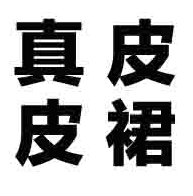





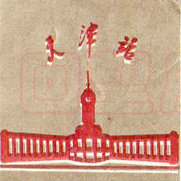

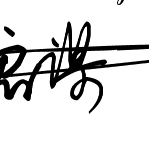

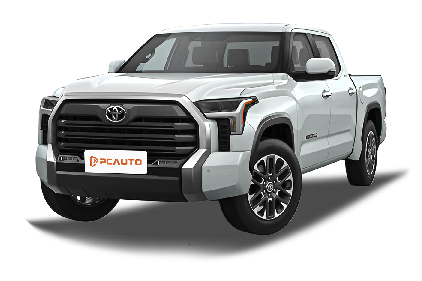
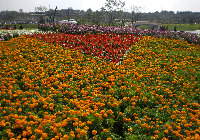




Pros
Cons